The municipality of Landunvez has a coastal road, a real balcony overlooking the ocean, which attracts tourists who want to contemplate the fury of the waves on stormy days and the superb lighting that shines through their skimming mane.All eyes are on the wild coast and the sea.The pretty
St-Samson Chapel
also receives many visitors.It would be a pity, however, if all these heritage lovers missed out on some discreet vestiges of prehistory without paying attention to them.
-1-
The menhir of Penfoul
Parking GPS : 48°31'51.6 N 4°44'54.6 W
Access :
From the D27, in the South-North direction between Porspoder and Landunvez, turn left onto the tourist road along the wild coast. Stop at the first car park and walk back along the road. The menhir of Penfoul, very discreet, is on the edge of a field, about twenty meters.
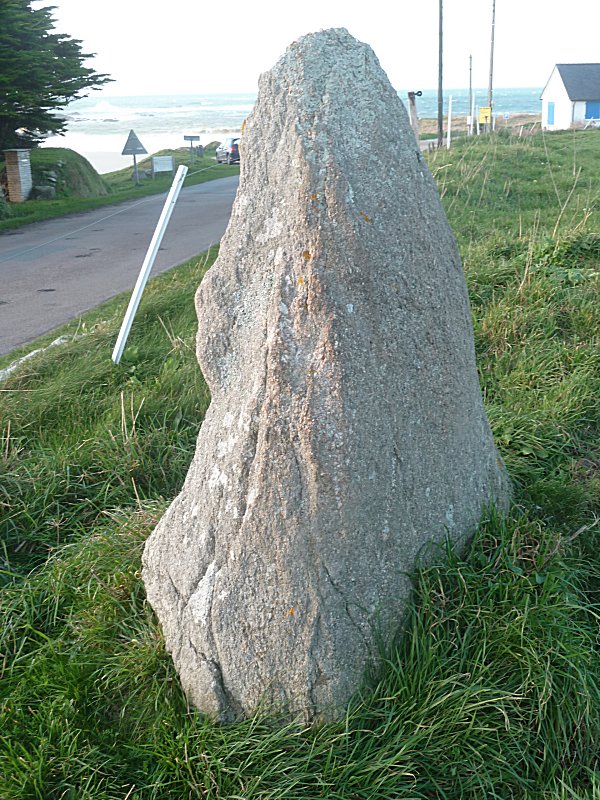
It is a small triangular menhir that does not exceed 1.40 m in height. It is 1.20 m wide and its average thickness is 60 cm. It is probable that the widening of the coastal path to make a road has upset the landscape at this place because one observes a stone lying in the slope. And on an inventory of the beginning of the XXth century, the archaeologist P. du Chatellier reports an alignment of three erected stones. The menhir of Penfoul is therefore only the last testimony of this.
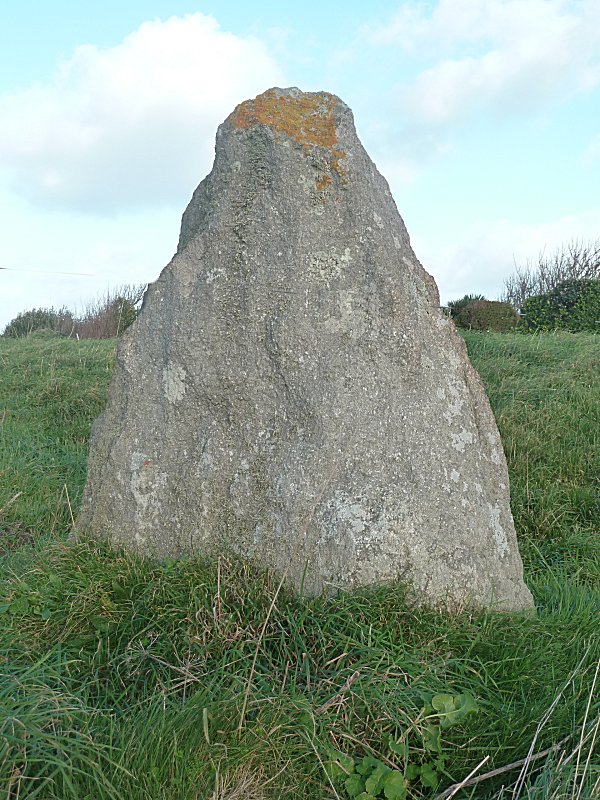
-2-
Beg ar Galeti's two menhirs
Access :
Continue on this beautiful tourist road. It is at its other end, 5 km away, that the point of Beg ar Galeti is located. We arrive at a vast carpark located in a bend. Take to the left the small road which goes down towards the sea. Stop in front of an old guard post.
Parking GPS : 48°33'31 N 4°43'00 W
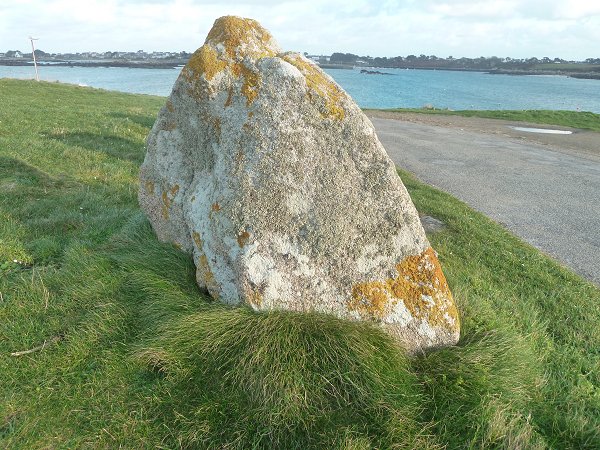
The first menhir is near the guard post. It is 1.20 m high, 1.35 m wide and 65 cm thick on average.
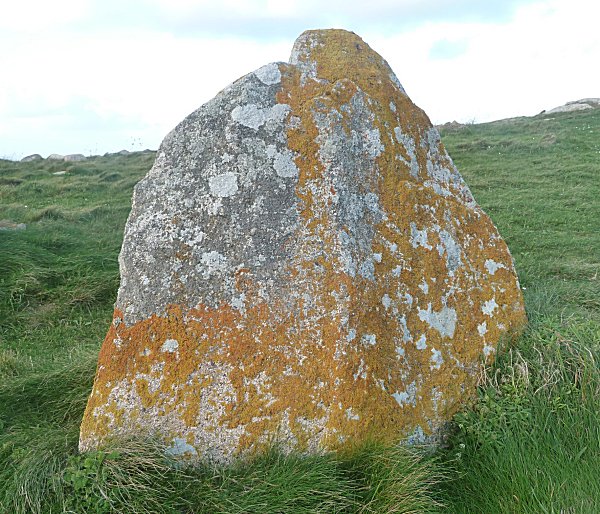
The second menhir is on the other side of the hill. Its inclination of about 50° to the ground is immediately noticeable.
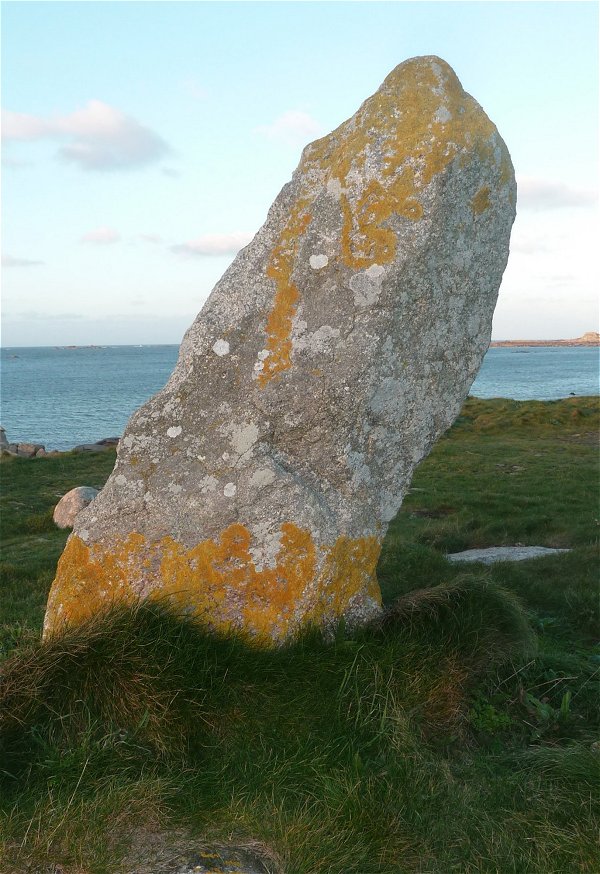
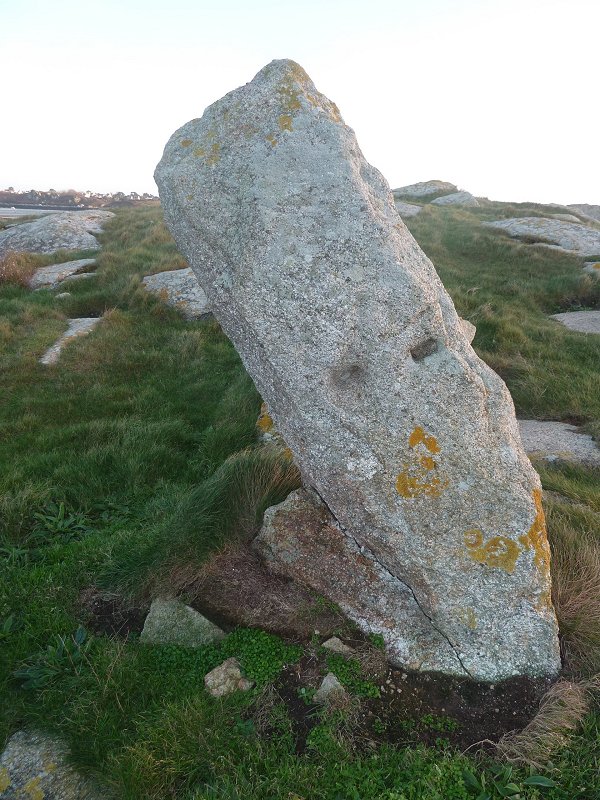
Facing the sea, the stone has two rectangular cavities that probably betray an attempt at cutting.
The hill itself is probably a cairn.It is dotted with stones of all sizes and several excavations show that it was even used as a quarry.
***
QR code of this page
Download this flashcode




